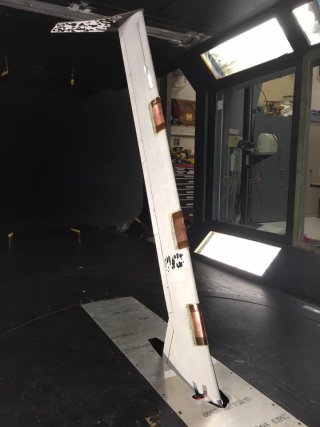Yes, at the University of Minnesota (
http://www.uav.aem.umn.edu) and our spinoff company (Bolder Flight Systems,
http://bolderflight.com) we are creating what we think is
the best platform for drone research and development for makers, research institutions, and businesses. It uses Teensy 3.6 boards integrated onto our own PCB's, along with a BeagleBone Black, to create an extremely low latency, deterministic, distributed, and highly scalable flight control system. We've been using drones to conduct aeronautics research for the past 11 years and have built on that experience to create this system. We also have a high fidelity MATLAB simulation, which integrates with the system to provide software in the loop and hardware in the loop verification and validation capabilities. Over the summer we'll be working to add support to compile and run autocode based flight control laws.
We've been testing prototype components, on ground and in flight, since last summer and just assembled the first batch of "release candidate" PCB's. Right now I'm updating our documentation and website, so we should have way more information and boards available for purchase in the next couple of months.
Two weeks ago, I used on of the release candidate boards to conduct some wind tunnel testing at Texas A&M for a NASA grant. In this test we had a flexible aircraft wing being controlled by 6 control surfaces and collecting data on: control surface position from integrated potentiometers and wing vibration / motion from dual integrated MPU-9250 IMU's in the wing tip (the flight units will also have a pair halfway out the wing). The test article is about 7 feet long, meaning the flight vehicle will have a 14 ft wing span and weigh about 40 lbs. It'll have a total of 15 actuators and record data on all of the actuator positions, the airspeed, altitude, and wind angles (angle of attack / angle of sideslip), inertial position and orientation, and structural motion as well as heaps of data on bus voltages, currents, and health / status information. The goal is to reduce commercial aircraft fuel burn by reducing aircraft weight and morphing the wing shape. That means that you end up with more flexible wings, so we need to stabilize the structure in real-time and also use the control surfaces to morph the wing shape to be more efficient for the given flight condition. This is the second vehicle in the program - we've already flown a 10 ft wingspan 15 lb vehicle to demonstrate some of this last year (and fluttered apart some aircraft along the way - it used a Teensy 3.2 as part of its flight control system).
So our flight control system will scale from super simple, hand launched UAVs and quadrotors to these much more complex vehicles with heaps of sensors and actuators. And it will do it all while maintaining extremely low latency from sensor to actuator.
Thanks Paul for such an awesome product to build off of! It's been a game changer in our lab from the flight computers to support and test equipment like motor thrust test stands and servo test rigs (measuring delay and bandwidth of servos).
Cheers!
Brian


